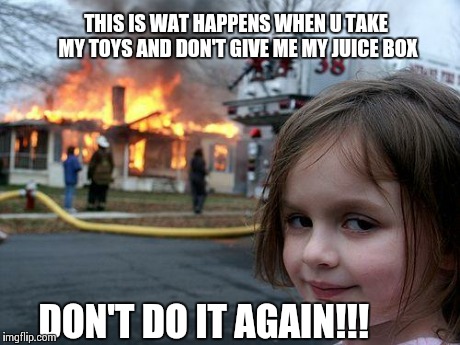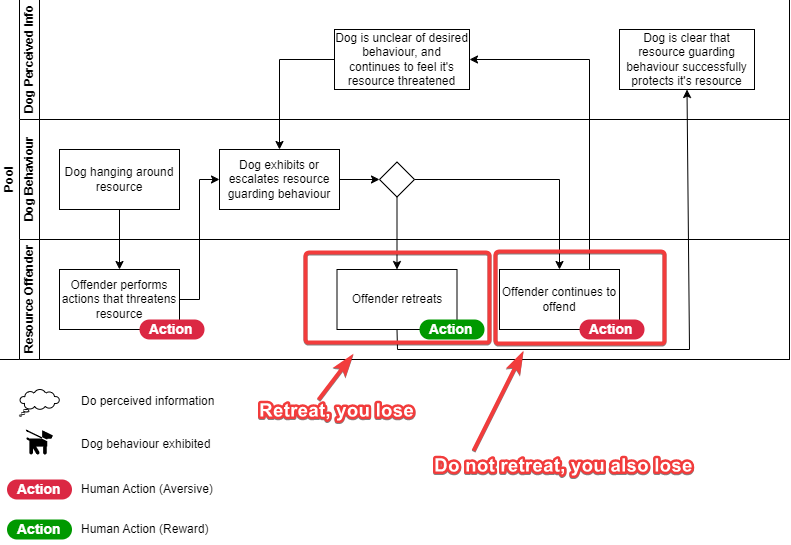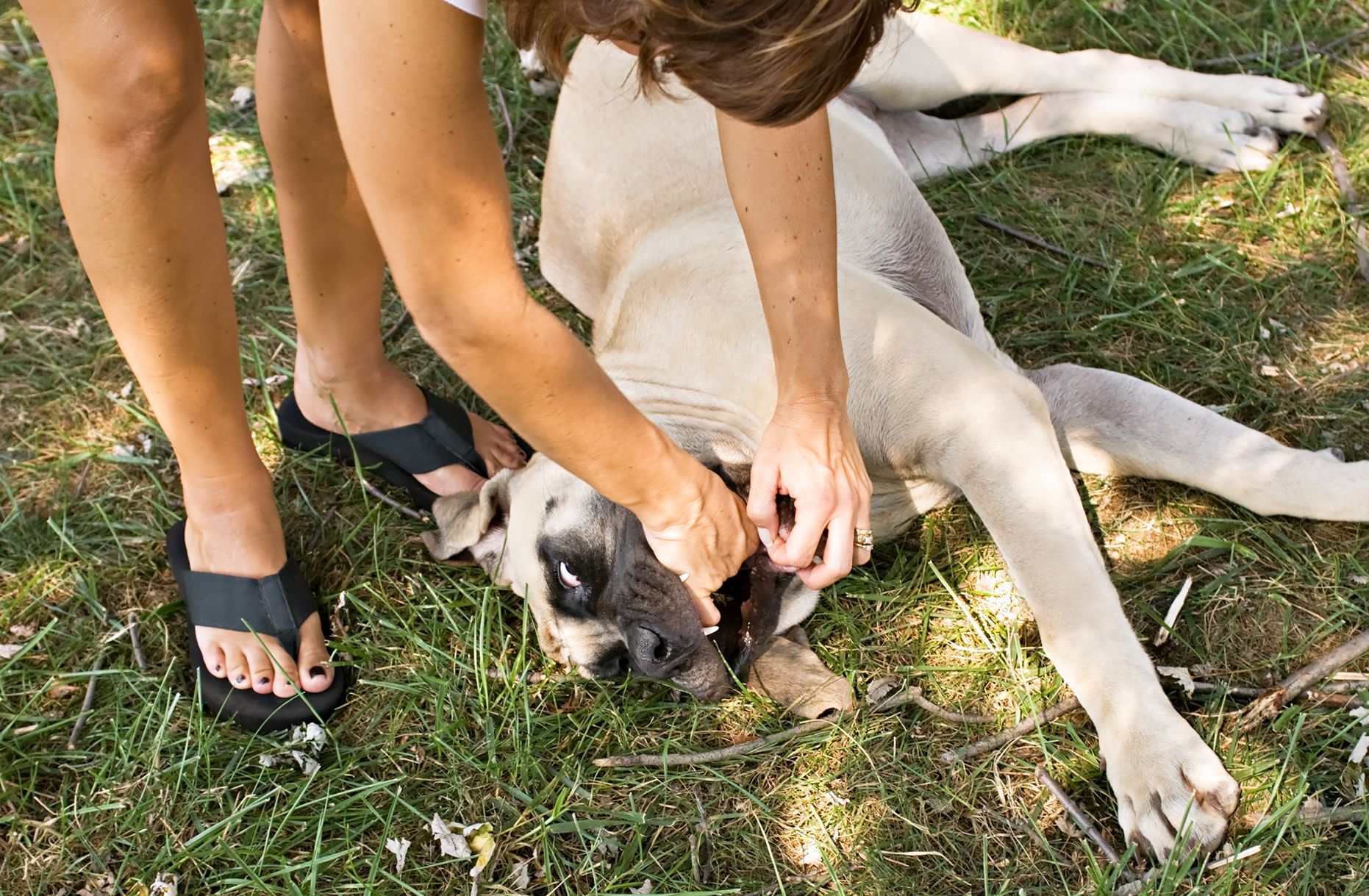Resource Guarding in Dogs
In this section, we’ll take you through the theory and mitigating actions that you do to prevent or address resource guarding. We will also give an example of our own experience with Stormy, on how we handled his resource guarding issue.
But before we proceed, we first need to understand what is resource guarding. Resource guarding is a natural behavior observed in dogs, stemming rom their instinct to protect valuable possessions.

Resource guarding manifests when a dog perceives a threat to items it deems valuable, including food, toys, territory, and even humans. Although a prevalent behavior, if left unchecked, resource guarding can escalate into problematic aggression. This behavior entails dogs displaying defensive actions or aggression to safeguard their prized possessions. Such possessions encompass a range, from food and toys to territory, sleeping areas, and human companions.
Signs of resource guarding
The signs of resource guarding may include signals of varying intensity. It is important to catch these signs at the early stages and address it accordingly because the resource guarding behaviour becomes increasingly difficult to treat as it progresses through the next intensity. Some of the common resource guarding behaviour is as follows:

- First Level: Head tilt down, indicating unhappiness.
- Second Level: Body stiffening, suggesting increased tension.
- Third Level: Aggressive barking as a warning sign.
- Fourth Level: Growling or snapping to protect resources.
Difficulty to Treat Resource Guarding
The problem with resource guarding is that it’s positively reinforcing. It’s a very effective method for the dog to achieve what he wants – get others away from the resource it’s protecting. Due to this, we would need to treat it in the early stage.
Unfortunately, it’s not very intuitive to treat it – without having the basic foundations of how the behaviour is re-inforced. If you take a look at the flow diagram below – you’ll notice that from the lay-man perspective, seems like a lose-lose situation:
- Retreat from offending the resource, and dog is reinforced to repeat the same behaviour
- Do not retreat, and the dog is likely to escalate the behaviour because it feels threatened.

And it doesn’t help that resource guarding behaviour is so effective at achieveing the dog’s target goal. I mean, if a dog growls at me – I’m gonna move away for surez lol. And this reinforce the resource guarding behaviour. Crazy Right!? So how to break this chain?
How to Stop Resource Guarding:
The good news is that, if we take a step back though, we notice one common issue with the above approach:
- Reinforcing the incorrect behaviour
- The desired behaviour is unclear
Note: Please see details of behaviour modification concepts here!
In the next few sections, we’ll walk you through our personal experience with Storm and the best practices on how to address resource guarding issues. Most of the concepts will focus on ensuring that
- We do not reinforce the resource guarding behaviour
- We ensure clarity in the desired behaviour of the dog
The flow in blue is the ideal sequence of events we want to trigger to achieve this. The crucial part for us dog handlers and owners to maximize the chances of this flow – is indicated by the red box in the diagram below:

When in the situation in the above flow, you can perform these activities to maximize the chances of ensuring the behaviour sequence goes through the desired flow.
- Stay Calm: Maintain a calm demeanor to avoid escalating the situation and to prevent triggering further aggression in the dog.
- Avoid Confrontation: Do not approach or attempt to take the guarded item directly from the dog to prevent potential aggression or reinforcement of guarding behavior.
- Create Distance: Step back or move away from the dog to reduce the perceived threat and give the dog space to calm down.
- Remove Triggers: Remove the object of contention or any other potential triggers from the dog’s vicinity to de-escalate the situation.
- Redirect Attention: Redirect the dog’s focus by offering an alternative item or engaging them in a different activity to distract from the guarded resource.
- Implement Obedience Commands: Use obedience commands like “sit,” “stay,” or “leave it” to assert control and redirect the dog’s behavior positively.
- Reinforce calm and non-guarding behavior with praise, treats, or affection to encourage desirable responses in future situations.
However, it is important to emphasize that resource guarding is a complex issue, and it should be treated with caution and preferably in the early stages. It would be advisable to seek professional assistance before performing any of the abovementioned activities!
Case Study – Stormy
Background
For Stormy – our doggo, he really loves chicken bones. For some reason, there are alot of chicken bones lying around during our walks, which he always tries to pick up.

For those not aware, chicken bones can actually splinter and cause injuries to the dog if chewed on – espececially cooked chicken bones. Hence, it’s advisable to ensure that your dog does not chew on cooked chicken bones.
Previously Applied Technique
We used to actually grab the chicken out of his mouth whenever he grabs a chicken bone successfully.

This action was successful for several weeks – and Stormy did not get any injuries related to splintered chicken bone.
However, this action is aversive because we are removing a highly valued treat from him – the chicken bone. It started being concerning when he starts head-tilting, when we try to remove the chicken bone from him, and the last straw was when his body went into a stiff position, trying to defend the chicken bone.
At this juncture, my wife (happens to be the chief behaviourist for Pet Coach SG), advised for us to stop forcefully removing the chicken bone. What!
That’s right – the tradeoff had to be made. The risk of having Storm develop agressive resource guarding outweights the chance of him getting injured from a chicken bone splinter. Based on that, we changed our approach to dealing with Chicken Bone.
Techniques for Addressing Chicken Bone Precursor Signals
We have implemented specific techniques to address Stormy’s behavior when he detects nearby chicken bones. By identifying precursor signals and applying redirection methods, we aim to guide his behavior towards more desirable actions.
Precursor Behavior:
When Stormy displays precursor signals indicating the presence of chicken bones, such as intense sniffing and focused attention on the ground, we intervene to redirect his behavior.
Redirected Behavior:
To redirect Stormy’s attention away from the chicken bones, we employ the following steps:
- Pause and Redirect: Immediately stop movement and leash activity to disrupt his focus.
- Offer Alternative: Provide Stormy with a high-value treat as an alternative distraction.
- Verbal Cue: Use commands like “Leave It!” or “Drop It!” to reinforce the desired behavior if he has already picked up the bone.

Management Intensity:
Implementing these techniques requires significant effort and commitment from the owners. However, the goal is to gradually reduce reliance on treats and verbal cues as Stormy matures and develops greater self-restraint.
Current Progress:
At present, Stormy occasionally picks up chicken bones, and our cues are not yet consistently effective. However, we acknowledge that the risk posed by chicken bones is comparatively lower and more manageable than the challenges associated with aggressive resource guarding – and hence, we picked our poison.

Conclusion
Resource guarding is a common behavior in dogs, yet it can escalate into problematic aggression if not addressed appropriately. By understanding the signs and implementing effective training techniques, owners can manage and reduce resource guarding behaviors in their dogs.
Prevention
For early-stage resource guarding, proactive measures can redirect behavior and foster positive habits:
- Start early: Commence training and socialization upon bringing the dog home.
- Teach “drop it” or “leave it” commands: Encourage the dog to release items willingly.
- Practice trading games: Exchange items to instill sharing behaviors.
- Respect your dog’s space: Allow uninterrupted eating or playtime.
This approach focuses on avoiding actions leading to aversive emotions and ensuring clarity in desired behaviors.

Intervention
In cases of advanced resource guarding, prompt intervention is crucial to prevent further escalation:
- Recognize the signs: Understand the dog’s body language to prevent escalation.
- Avoid punishment: Negative reinforcement may exacerbate guarding behaviors.
- Seek professional help: Consult certified dog trainers or behaviorists for personalized guidance.
- Implement desensitization and counterconditioning: Gradually expose the dog to triggers while offering positive reinforcement.
Although our dog, Stormy, has not exhibited signs of advanced resource guarding yet, we remain vigilant. Consulting a professional is advisable for dogs in advanced stages, as correcting the behavior becomes more challenging.
Thanks a bunch guys!
Peace and Love
Shafik Walakaka